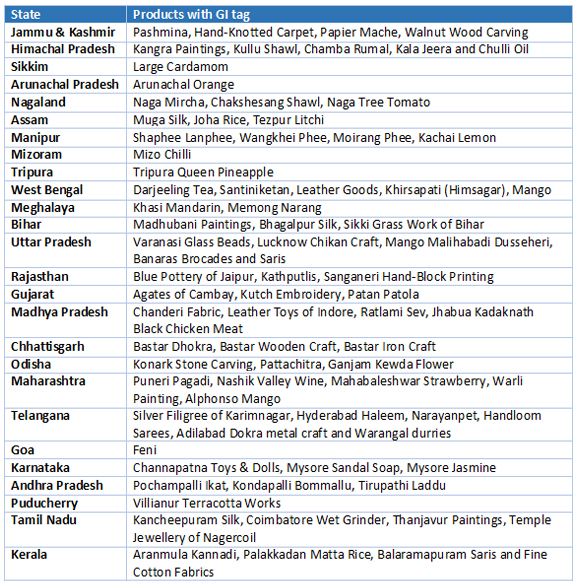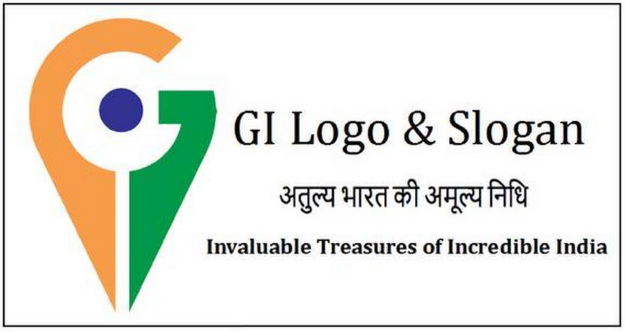Geographical indications (GI)
Geographical Indication (GI) is an indicator that specifies that the quality, reputation or other characteristics of a good can each be a sufficient basis for eligibility as a geographical indication, where they are essentially attributable to the geographical origin of the good.

Geographical indications emanate from Trade-Related Aspects of Intellectual Property Rights (or TRIPS) Agreement, which came into effect on January 1, 1995. This multilateral agreement on intellectual property has the following components:
i. Copyright and related rights: i.e. the rights of performers, producers of sound recordings and broadcasting organizations;
ii. Trademarks: i.e. any sign, or any combination of signs, capable of distinguishing the goods and services of one undertaking from those of other undertakings;
iii. Geographical indications: appellations of origin;
iv. Industrial designs: protection of independently created industrial designs that are new or original;
v. Patents including the protection of new varieties of plants: the exclusive right granted by a government to an inventor to manufacture, use, or sell an invention for a certain number of years;
vi. Layout-designs of integrated circuits: i.e. a product, in its final form or an intermediate form, in which the elements, at least one of which is an active element, and some or all of the interconnections are integrally formed in and/or on a piece of material and which is intended to perform an electronic function;
vii. Undisclosed information including trade secrets and test data.
According to the World Trade Organization, geographical indications are place names (in some countries also words associated with a place) used to identify products that come from these places and have these characteristics (for example, “Champagne”, “Tequila” or “Roquefort”). In other words, GI is an indicator that specifies that the quality, reputation or other characteristics of a good can each be a sufficient basis for eligibility as a geographical indication, where they are essentially attributable to the geographical origin of the good. A GI aims to promote, facilitate trade growth and discourage duplication of such products.
Article 22 of the TRIPS Agreement mandates the protection of GI to avoid misleading the public and to prevent unfair competition. Article 23 lays the framework for a higher or enhanced level of protection for geographical indications for wines and spirits; while Article 24 lays down the exceptions to these rules.
One exception could be when a name has become the common (or “generic”) term (for example, “cheddar” now refers to a particular type of cheese not necessarily made in Cheddar, in the UK), and when a term has already been registered as a trademark.
In India, Geographical Indications registration is accorded by the Geographical Indications of Goods (Registration and Protection) Act, 1999 which came into operation with effect from September 2003. The first product in India to be accorded with GI tag was Darjeeling tea (2004-05). Some examples of Indian products, which have received the GI tag include:
Products with GI registration in India

The Department for Promotion of Industry and Internal Trade (DPIIT) has taken a number of initiatives for promotion and marketing of GIs. It has undertaken a comprehensive and holistic campaign on promotion of GIs has been undertaken. It has launched a common logo and tagline for Geographical indications of India. The usage of the logo is subject to terms and conditions.

GI application has to be submitted by association of persons or producers or any organization or authority established by or under any law for time being in force; who must be representing the interest of the producers of the concerned goods; and desirous of registering a geographical indication in relation to such goods. They should represent the interests of producers of the concerned goods and should file an affidavit on how the applicant claims to represent their interest:
- Application must be made in triplicate.
- The application shall be signed by the applicant or his agent and must be accompanied by a statement of case.
- Details of the special characteristics and how those standards are maintained.
- Three certified copies of the map of the region to which the GI relates.
- Details of the inspection structure if any to regulate the use of the GI in the territory to which it relates.
- Give details of all the applicant together with address. If there is a large number of producers a collective reference to all the producers of the goods may be made in the application and the G.I., If registered will be indicated accordingly in the register.
An authorised user is a person who has been registered as such under Section 17 of the Geographical Indications of Goods (Registration and Protection) Act,1999 act. A producer of the goods in respect of which geographical indication has been registered is eligible to register himself as an authorised user.
In order to register oneself as an authorised user, the producer needs to provide a statement and other documents of facts which would allow the registrar to ascertain the veracity of their claims. The registration of an authorised user is valid for 10 years, or till the date on which the registration of the related geographical indication expires.













Leave a comment